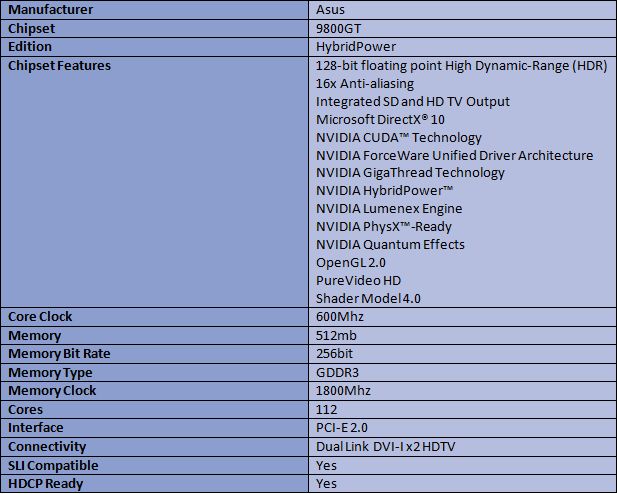ASUS EN9800GT 512mb PCI-E
Today, we will be taking a look at the 9800GT from Asus. The 9800GT, on the surface at least, appears to be a clone of the overclockers favourite from the previous generation, the 8800GT. You would therefore be forgiven in believing that NVidia have done nothing, other than to change the marketing of the 8800GT to a 9800GT. NVidia it seems though, have kept very quiet about this card and the 9600GSO. Instead, the green camp have kept silent over its release, letting the cards do all the talking while they sit back and liquidate the remaining 8800GT 65nm cores.
So what does this mean for the consumer? Well, confusion for a start. Adding yet another card to the NVidia line-up serves only to confuse matters further than it already is. Especially when you consider that when stripped down to the bone, the 9800GT is simply a re badged 8800GT. There are a few added extras though such as Pure Video and Hybrid Power compatibility, should you have an NVidia based chipset supporting those features. To their credit Asus have not just sat back and released a reference design, but they have included a blue PCB and a ‘Glaciator’ heatsink which is much the same as the one found on the Asus EAH4850 1GB version we reviewed earlier.
Let’s take a look at the specifications:
Â
Â
As you can see, the EN9800GT is startlingly similar in design to the 8800GT. In fact, it’s almost an exact clone bar the chipset features.
Let’s take a look at the card itself which includes the ‘Glaciator’ cooler. A cooler which Asus claims to allow a 7c temperature drop on the reference 9800GT. Theoretically, the Glaciator should allow for higher overclocks.




